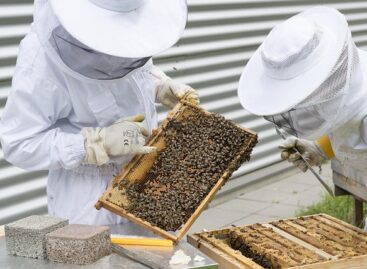KSH: 196,000 agricultural farms operate in Hungary
This year, compared to 2020, the number of farms engaged in agricultural activities decreased by 19 percent to 196,000, the head of the Central Statistical Office (KSH) said at a press conference in Budapest on Thursday.

This is not unique at the European level, as the number of agricultural farms in the member states of the Union is constantly decreasing. In addition, in the case of Hungary, the transformation of the property structure is also behind this process – added Péter Tóth, presenting the preliminary results of the farm structure census entitled Agrárium 2023, which took place between May 15 and July 15. He said that the number of farms under one hectare has halved in the last three years. In the same period, the number of farms cultivating an area of more than 1,000 hectares decreased by about 20 percent. The survey, which serves to help farmers make decisions and to base policy decisions, also revealed that the proportion of plant growers in Hungary is constantly rising, reaching 73 percent this year, while the proportion of livestock keepers has dropped to 14 percent. Péter Tóth indicated that, in addition to Hungary, crop growers predominate in Bulgaria and Romania, while livestock farms predominate in the Netherlands, Luxembourg and Ireland.
Plant growers had to deal with several problems
The census entitled Agrárium 2023 also pointed out that in Hungary in recent years, among other things, high energy prices and last year’s drought have caused difficulties for plant growers, and for livestock keepers the treatment of animal diseases and high feed costs. Péter Tóth pointed out that in the last three years, the proportion of people over the age of 65 among those managing the agricultural economy rose to 37 percent, which is extremely high. At the same time, the proportion of farmers under the age of 40 – as in 2020 – remained at 10 percent. The KSH department and project manager mentioned as a positive that the percentage of people with at least a secondary agricultural education is constantly increasing, which already reached 34 percent this year. And 11 percent of the farmers have a higher degree in agriculture. The proportion of farmers who rely on their practical experience – who do not have an agricultural qualification – decreased from 80 percent measured in 2010 to 55 percent this year. The future plans of those involved revealed that every fourth farmer will manage his farm for at least another 10 years. However, every eighth respondent only plans for a maximum of 5 years. Péter Tóth said that 55 percent of the country’s territory is agricultural land, which is an outstanding ratio among EU member states. Fields still account for 82 percent of agricultural land, and grassland for 16 percent.
Vegetables are grown on roughly 80,000 hectares, and fruit trees on 83,000 hectares
During the census, it was also established that the fruit plantations are aging, so it is difficult to carry out efficient farming on them. As an example, he mentioned that 53 percent of apple plantations are older than 15 years. Péter Tóth also spoke about the fact that the cattle herd has been decreasing since 2020, which this year consists of 876,000 animals. The number of pigs on June 1 this year was 2.6 million, this number is divided among 25,000 enterprises. The number of poultry exceeded 34 million, while the number of sheep was 922 thousand at the time of the census. Almost 60 percent of the cattle and almost 83 percent of the pigs are kept in economic organizations, while a significant part of the sheep stock is found in individual farms.
MTI
Related news
The value of agricultural output is expected to increase by around 6 percent in 2025
🎧 Hallgasd a cikket: Lejátszás Szünet Folytatás Leállítás Nyelv: Auto…
Read more >Ministry of Agriculture: further help for the dairy sector, educational institutions can join the school milk program even during the school year
🎧 Hallgasd a cikket: Lejátszás Szünet Folytatás Leállítás Nyelv: Auto…
Read more >The payment of bee animal welfare subsidies has begun
🎧 Hallgasd a cikket: Lejátszás Szünet Folytatás Leállítás Nyelv: Auto…
Read more >Related news
(HU) Idei győztes sorrend: Grand Automotive East, Tesco Magyarország, Nestlé Hungária
🎧 Hallgasd a cikket: Lejátszás Szünet Folytatás Leállítás Nyelv: Auto…
Read more >Hungarian professional leadership also shaped global economic decisions at the historic B20 summit in South Africa
🎧 Hallgasd a cikket: Lejátszás Szünet Folytatás Leállítás Nyelv: Auto…
Read more >Foodora expands: it brought fast delivery to 21 new cities this year
🎧 Hallgasd a cikket: Lejátszás Szünet Folytatás Leállítás Nyelv: Auto…
Read more >






